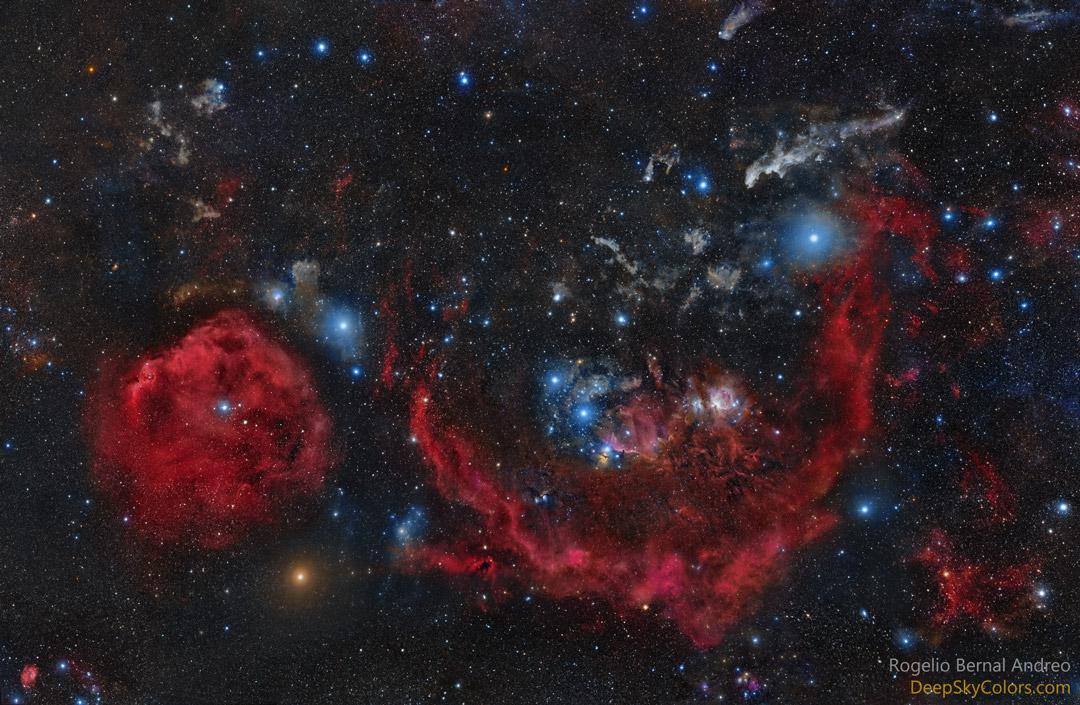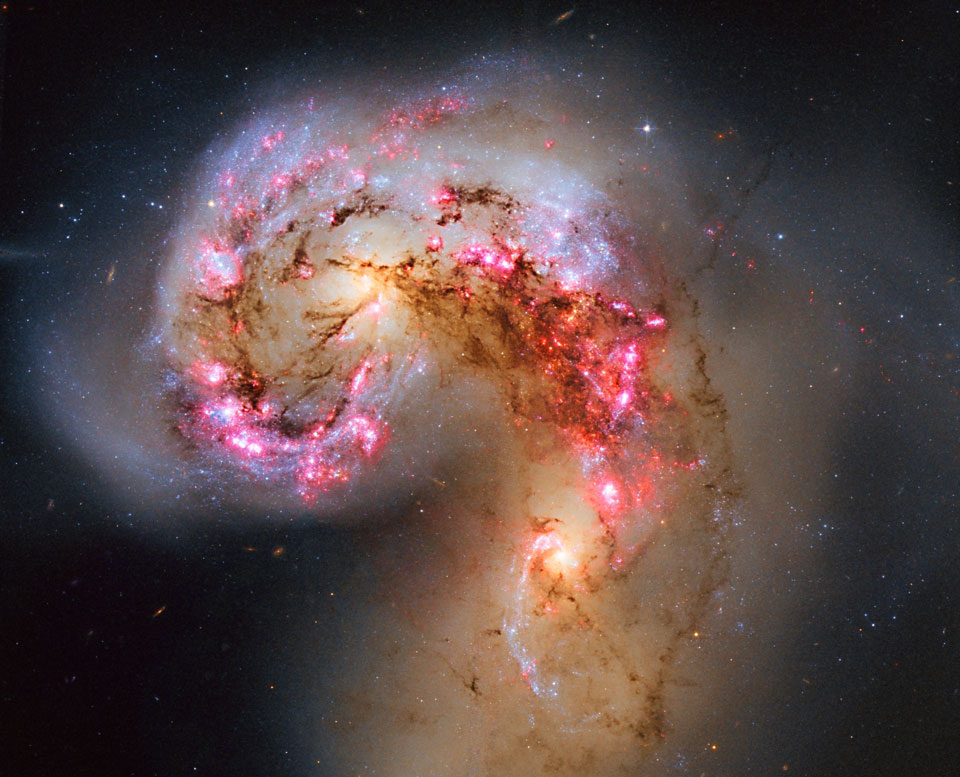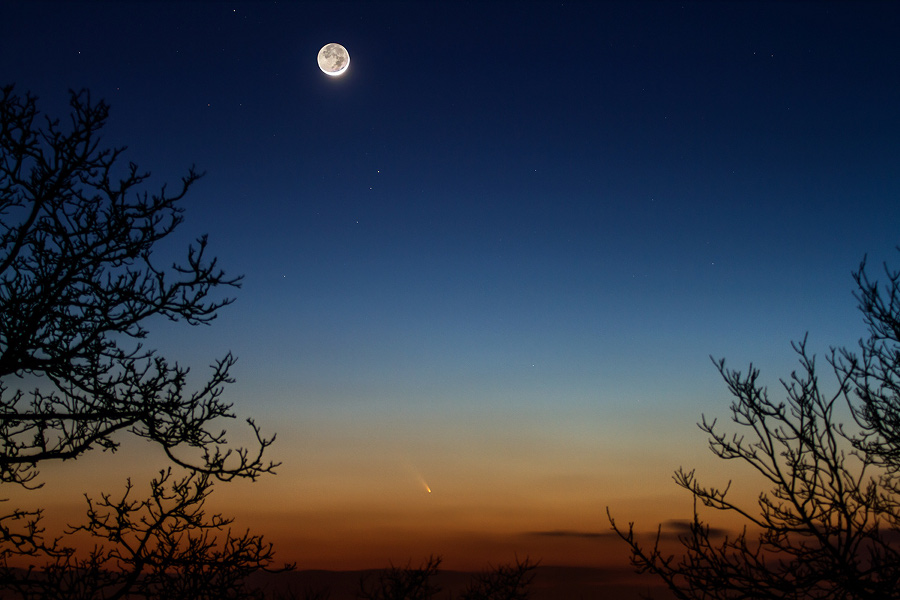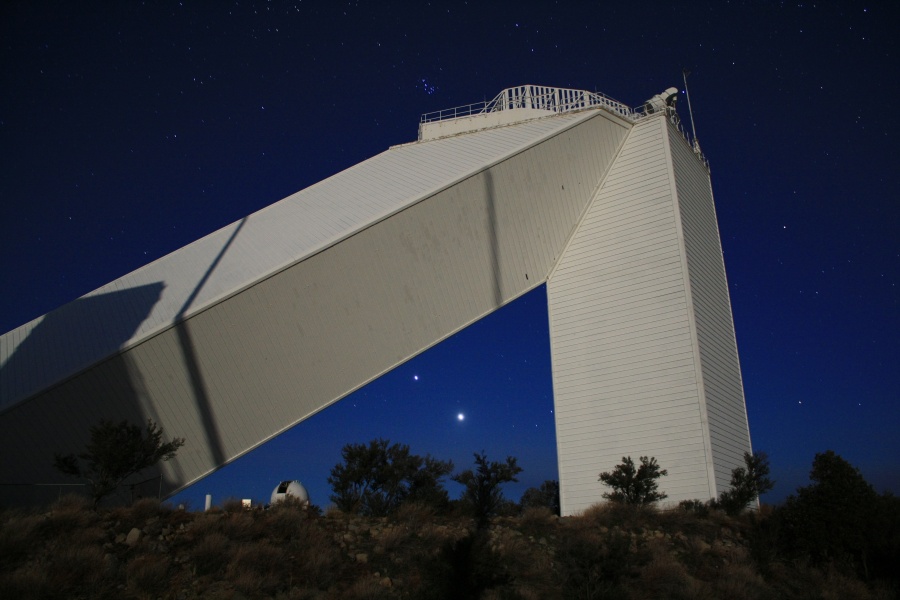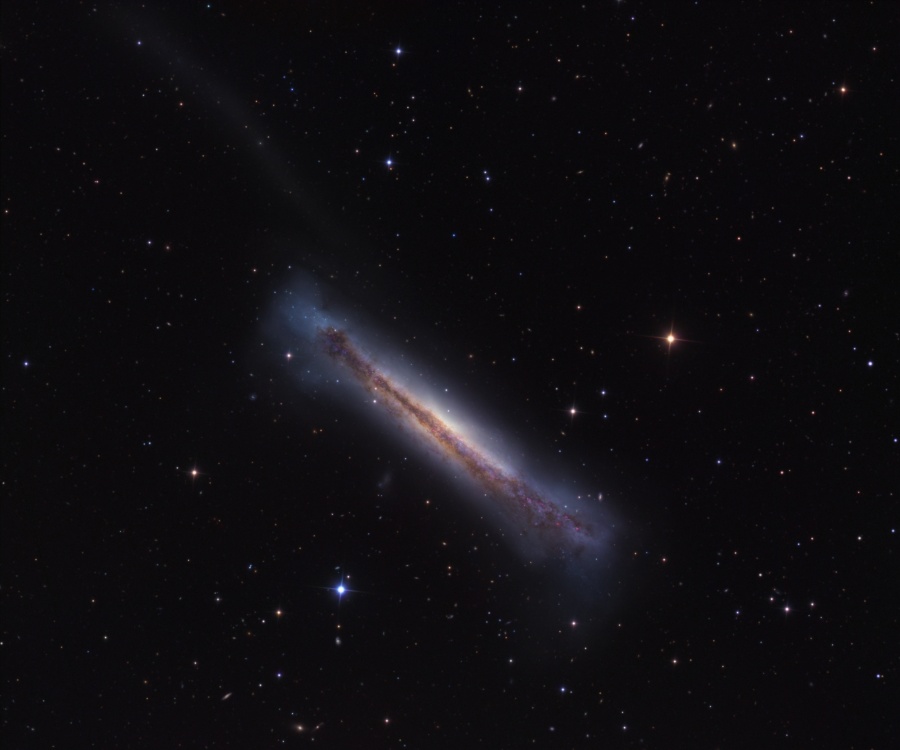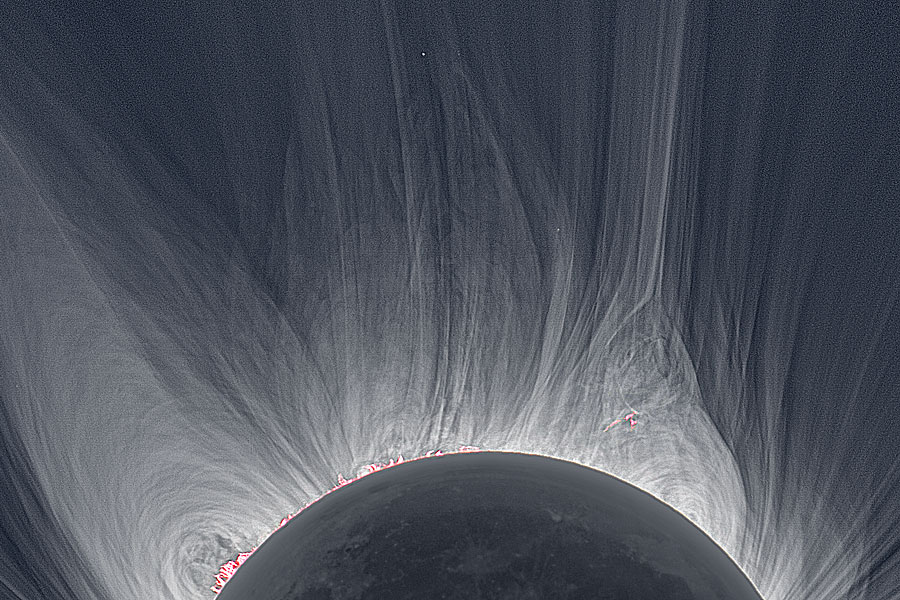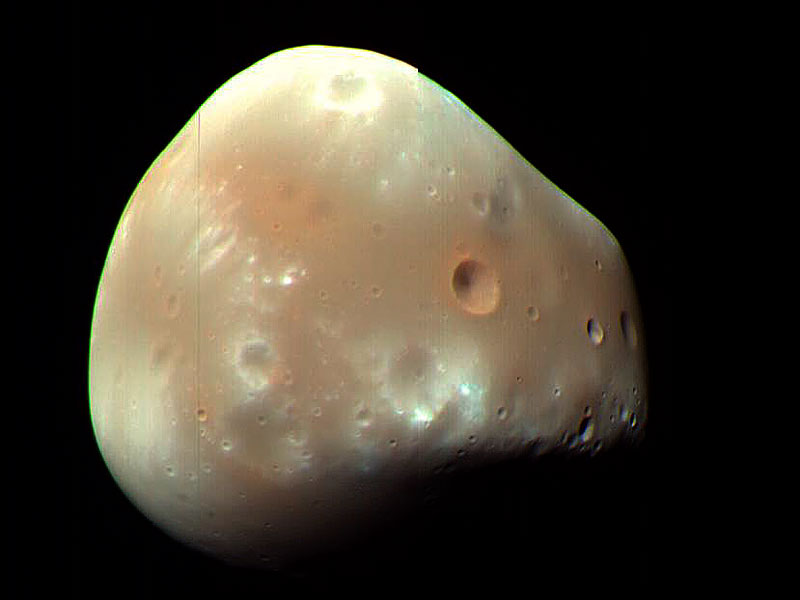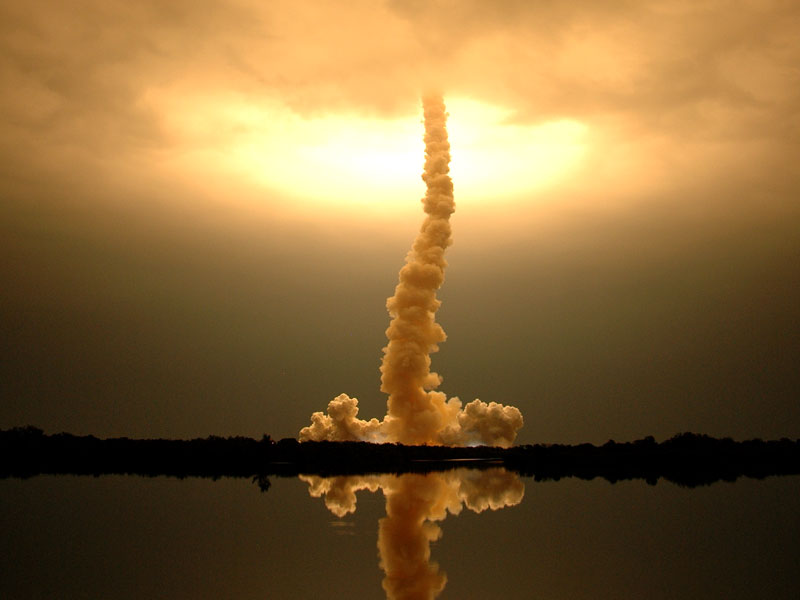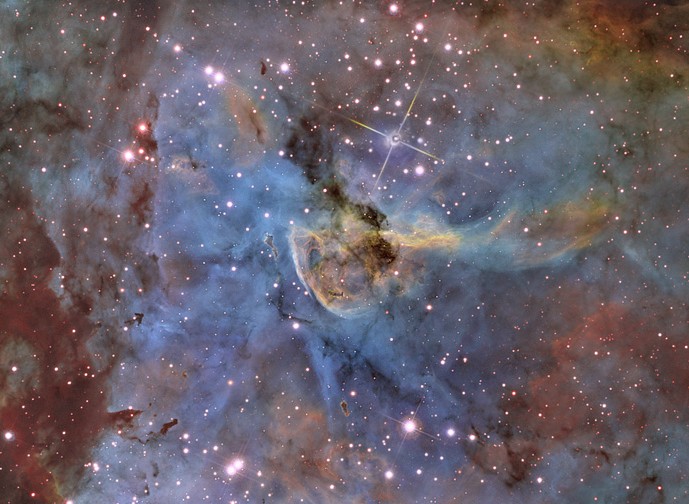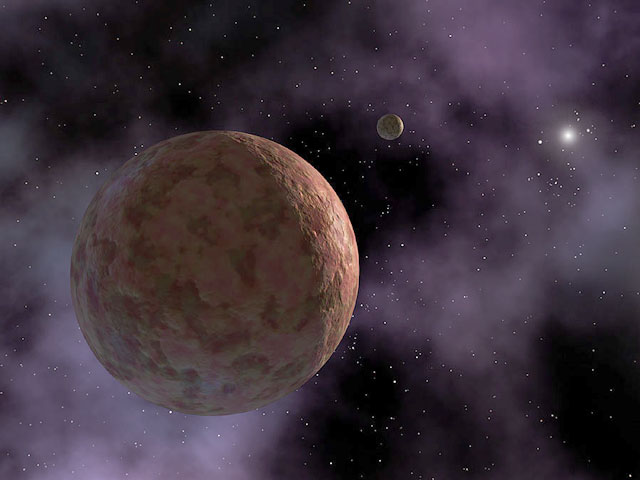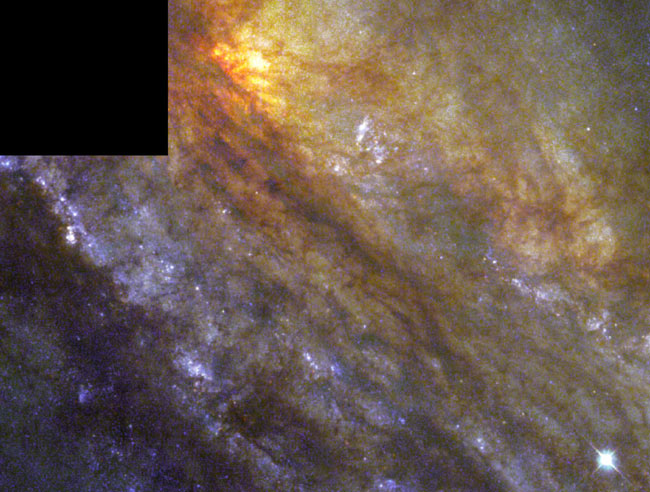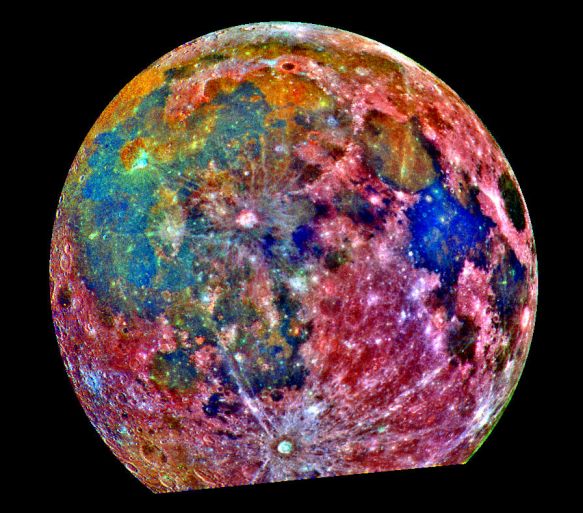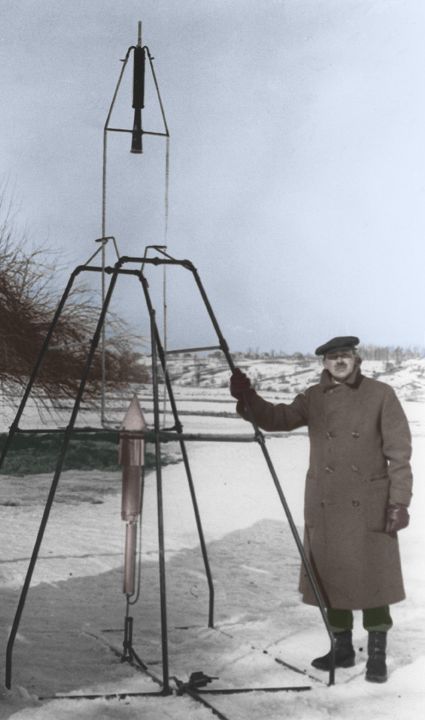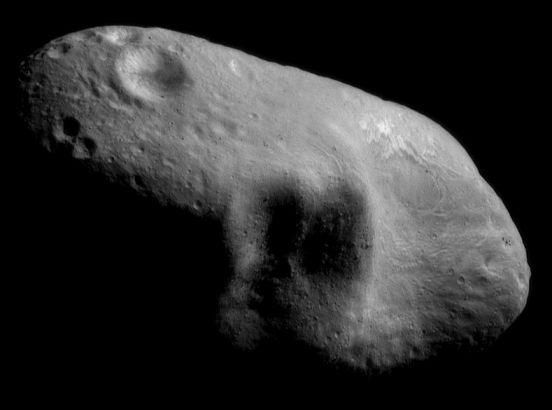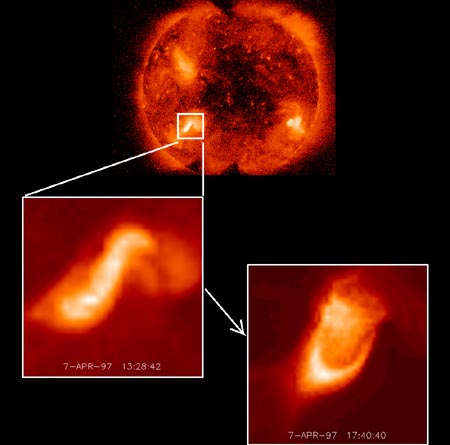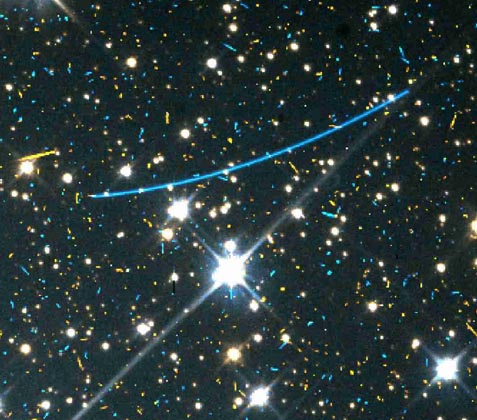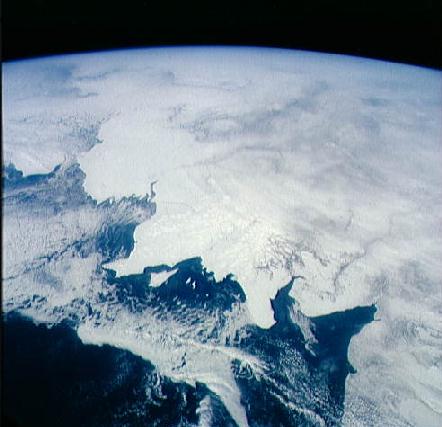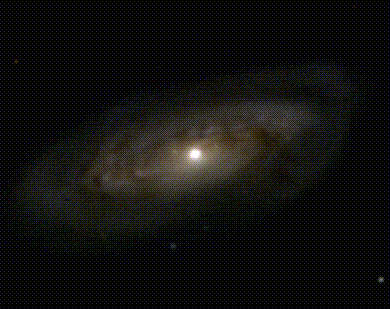| << Previous | Index | Next >> |
2015 Cradled in cosmic dust and glowing hydrogen, stellar nurseries in Orion the Hunter lie at the edge of giant molecular clouds some 1,500 light-years away. Spanning about 30 degrees, this breath-taking vista stretches across the well-known constellation from head to toe (left to right) and beyond. At 1,500 light years away, the Great Orion Nebula is the closest large star forming region, here visible just right and below center. To its left are the Horsehead Nebula, M78, and Orion's belt stars. Sliding your cursor over the picture will also find red giant Betelgeuse at the hunter's shoulder, bright blue Rigel at his foot, the Witch Head Nebula above -- and illuminated by -- Rigel, and the glowing Lambda Orionis (Meissa) nebula on the left, near Orion's head. Of course, the Orion Nebula and bright stars are easy to see with the unaided eye, but dust clouds and emission from the extensive interstellar gas in this nebula-rich complex, are too faint and much harder to record. In this mosaic of broadband telescopic images, additional image data acquired with a narrow hydrogen alpha filter was used to bring out the pervasive tendrils of energized atomic hydrogen gas like in the arc of the giant Barnard's Loop.
2014 Two galaxies are squaring off in Corvus and here are the latest pictures. When two galaxies collide, the stars that compose them usually do not. That's because galaxies are mostly empty space and, however bright, stars only take up only a small amount of that space. During the slow, hundred million year collision, one galaxy can still rip the other apart gravitationally, and dust and gas common to both galaxies does collide. In this clash of the titans, dark dust pillars mark massive molecular clouds are being compressed during the galactic encounter, causing the rapid birth of millions of stars, some of which are gravitationally bound together in massive star clusters.
2013 Still looking for that comet? Comet PanSTARRS (C/2011 L4) naked-eye appearance in the northern hemisphere is described by successful comet spotters as a dim star with a faint tail. If you want to catch it the next few days could be your best bet. Start looking low and almost due west about 45 minutes after sunset. Of course, clear skies and a pair of binoculars should help a lot. Sky photographer Jean-Luc Dauvergne found suitable weather and western horizon for this comet and crescent Moon portrait after a road trip on March 13. Seeing PanSTARRS for the first time, he recorded the beautiful twilight scene with a telephoto lens near historical Alesia in France.
2012
2011 Dark dust lanes cut across the middle of this gorgeous island universe, a strong hint that NGC 3628 is a spiral galaxy seen sideways. About 35 million light-years away in the northern springtime constellation Leo, NGC 3628 bears the distinction of being the only member of the well known Leo triplet of galaxies not in Charles Messier's famous catalog. Otherwise similar in size to our Milky Way Galaxy, the disk of NGC 3628 is clearly seen to fan out near the edges. A faint arm of material extends to the upper left. The distorted shape and faint tidal tail suggest that NGC 3628 is interacting gravitationally with the other spiral galaxies in the Leo triplet, M66 and M65. The dusty disk of NGC 3628 is also dotted with the telltale reddish hues of star-forming regions in this sharp telescopic view. Explore the full resolution version here.
2010
2009 Mars has two tiny moons, Phobos and Deimos. Pictured above, in a recently release image by HiRISE camera onboard the Mars-orbiting Mars Reconnaissance Orbiter (MRO), is Deimos, the smaller moon of Mars. Deimos is one of the smallest known moons in the Solar System measuring only about 15 kilometers across. The diminutive Martian moon was discovered in 1877 by Asaph Hall, an American astronomer working at the US Naval Observatory in Washington D.C. The existence of two Martian moons was predicted around 1610 by Johannes Kepler, the astronomer who derived the laws of planetary motion. In this case, Kepler's prediction was not based on scientific principles, but his writings and ideas were so influential that the two Martian moons are discussed in works of fiction such as Jonathan Swift's Gulliver's Travels, written in 1726, over 150 years before their actual discovery.
2008 Birds don't fly as high. Airplanes don't go as fast. The Statue of Liberty weighs less. No species other than human can even comprehend what is going on, nor could any human just a millennium ago. The launch of a rocket bound for space is an event that inspires awe and challenges description. The exhaust column pictured is from the Space Shuttle Endeavour after last week's night launch to visit the International Space Station. Endeavour's rocket engines create the dramatic glow from above the clouds. From a standing start, the two million kilogram rocket ship left to circle the Earth where the outside air is too thin to breathe and where there is little noticeable onboard gravity. Rockets bound for space are now launched from somewhere on Earth about once a week.
2007 The March 3rd total lunar eclipse was widely viewed by denizens of planet Earth. But only a day before, well placed observers could also watch a lunar occultation of Saturn as the planet passed behind the nearly Full Moon. From Selsey, UK, astronomer Pete Lawrence actually saw Saturn graze the lunar limb, the Moon's bright surface dramatically eclipsing a substantial part of the gas giant's spectacular rings. In this summary view of the grazing occultation, south is up and Saturn's position is shown every 90 seconds in a composite of images constructed from video frames. The frames were all recorded near the occultation event, then combined and adjusted to compensate for the large difference in brightness between Saturn and the lunar surface.
2006 South is toward the top in this colorful close-up view of the Great Carina Nebula (NGC 3372), famous star-forming region of the southern sky. Covering an area surrounding the dusty Keyhole Nebula (NGC 3324) near picture center, the image spans about 40 light-years within the larger Carina Nebula at an estimated distance of 7,500 light-years. Like the more northerly Orion Nebula, the bright Carina Nebula is easily visible to the naked-eye. But the dramatic colors in this telescopic picture are mapped colors, based on three exposures through narrow filters each intended to record the light emitted by specific atoms in the gaseous nebula. Sulfur is shown in blue, hydrogen in green and oxygen in red hues. The Carina Nebula is home to young, extremely massive stars, including the still enigmatic variable Eta Carinae, a star with well over 100 times the mass of the Sun. Highlighted by diffraction spikes, Eta is just above and right (east) of the Keyhole.
2005 Across the heart of the Virgo Cluster of Galaxies lies a striking string of galaxies known as Markarian's Chain. The chain, pictured above, is highlighted on the upper right with two large but featureless lenticular galaxies, M84 and M86, and connects to the large spiral on the lower left, M88. Prominent on the lower right but not part of Markarian's Chain is the giant elliptical galaxy M87. The home Virgo Cluster is the nearest cluster of galaxies, contains over 2000 galaxies, and has a noticeable gravitational pull on the galaxies of the Local Group of Galaxies surrounding our Milky Way Galaxy. The center of the Virgo Cluster is located about 70 million light years away toward the constellation of Virgo. At least seven galaxies in the chain appear to move coherently, although others appear to be superposed by chance.
2004 What is the most distant known object in our Solar System? A new answer to this centuries-old question was announced yesterday by NASA with the discovery of a dark red object dubbed Sedna. Although over twice the distance to Pluto, Sedna is near its closest approach to the Sun. Sedna's highly elliptical orbit will further displace it by 10 times, making it a candidate for the long-hypothesized Oort cloud of icy objects thought to extend to the Solar System's edge. Sedna is estimated to be about three-quarters the size of Pluto and therefore the largest Solar System object found since Pluto in 1930. Whether Sedna is ever designated a planet is at the discretion of the International Astronomical Union. The above drawing depicts how Sedna might look facing the distant Sun. The unexpectedly red color, the unusual orbit, and the origin of Sedna will surely be topic of much future research.
2003 NGC 253 is not only one of the brightest spiral galaxies visible, it is also one of the dustiest. Discovered in 1783 by Caroline Herschel in the constellation of Sculptor, NGC 253 lies only about ten million light-years distant. NGC 253 is the largest member of the Sculptor Group of Galaxies, the nearest group to our own Local Group of Galaxies. The dense dark dust accompanies a high star formation rate, giving NGC 253 the designation of starburst galaxy. Visible in the above photograph from the Hubble Space Telescope is the active central nucleus, also known to be a bright source of X-rays and gamma rays.
2002 Do you recognize the Earth's Moon when you see it? The crazy, patchwork appearance of the false-color image makes this almost full view of the Moon's familiar near side look very strange. The Sea of Tranquillity (Mare Tranquillitatis) is the bright blue area at right, the Ocean of Storms (Oceanus Procellarum) is the extensive blue and orange area on the left, and white lines radiate from the crater Tycho at bottom center. Recorded in 1992 by the Galileo spacecraft enroute to Jupiter, the picture is a mosaic of 15 images taken through three color filters. The image data were combined in an exaggerated color scheme to emphasize composition differences - blue hues reveal titanium rich areas while orange and purple colors show regions relatively poor in titanium and iron. Multicolor images exploring the Moon's global surface composition were made in 1994 by the Clementine spacecraft.
2001 Robert H. Goddard, one of the founding fathers of modern rocketry, was born in Worcester Massachusetts in 1882. As a 16 year old, Goddard read H.G. Wells' science fiction classic "War Of The Worlds" and dreamed of space flight. By 1926 he had designed, built, and flown the world's first liquid fuel rocket. Launched 75 years ago today from his aunt Effie's farm in Auburn Massachusetts, the rocket, dubbed "Nell", rose to an altitude of 41 feet in a flight that lasted about 2 1/2 seconds. Pictured here Goddard stands next to the 10 foot tall rocket, holding the launch stand. To achieve a stable flight without the need for fins the rocket's heavy motor is located at the top, fed by lines from liquid oxygen and gasoline fuel tanks at the bottom. During his career Goddard was ridiculed by the press for suggesting that rockets could be flown to the Moon, but he kept up his experiments supported in part by the Smithsonian Institution and championed by Charles Lindbergh. Widely recognized as a gifted experimenter and engineering genius, his rockets were many years ahead of their time. Goddard was awarded over 200 patents in rocket technology, most of them after his death in 1945. A liquid fuel rocket constructed on principles developed by Goddard landed humans on the Moon in 1969.
2000 Orbiting asteroid 433 Eros, 145 million miles from Earth, NASA's NEAR spacecraft has been returning stunning views as its year long mission of exploration gets underway. A mosaic of recent NEAR images recorded at a range of about 127 miles, this picture illustrates some of the amazing contrasts which apparently exist within the domain of this diminutive world. Features as small as 65 feet are visible here, while long shadows emphasize the differences in the cratered regions at the left and smooth groved terrain at right. Up close, the undulating surface seems flecked with bright deposits and peppered with enormous boulders. As NEAR is poised to investigate mysteries of the formation of asteroids and the origins of the solar system from this unprecedented vantage point, NASA has renamed the spacecraft NEAR Shoemaker in honor of the late Dr. Eugene M. Shoemaker, legendary geologist, comet hunter, and inspirational pioneer in the field of interplanetary science.
1999 On the Sun, S marks the spot. Solar explosions have been discovered to explode preferentially from regions marked with this letter. The surface of the quiet Sun is a maze of hot gas and flowing magnetic fields. When two regions of high magnetic field strength approach each other, they typically pass uneventfully. If the two regions pass close enough and in just the right way, however, an X-ray bright S-shaped region called a sigmoid forms and quickly explodes in a Coronal Mass Ejection (CME). Astronomers conjecture that in the center of the sigmoid, a circuit closes that somehow drives the explosion. The above picture shows the Sun in X-ray light. A pre-CME sigmoid is shown on the left inset image, while a post-CME arc is shown in the right inset.
1998 Rocks from space hit Earth every day. The larger the rock, though, the less often Earth is struck. Many kilograms of space dust pitter to Earth daily. Larger bits appear initially as a bright meteor. Baseball-sized rocks and ice-balls streak through our atmosphere daily, most evaporating quickly to nothing. Significant threats do exist for rocks near 100 meters in diameter, which strike Earth roughly every 1000 years. An object this size could cause significant tidal waves were it to strike an ocean, potentially devastating even distant shores. A collision with a massive asteroid, over 1 km across, is more rare, occurring typically millions of years apart, but could have truly global consequences. Many asteroids remain undiscovered. In fact, the discovery of several was announced last week; one is shown as the long blue streak in the above photograph. Such an interplanetary collision would not affect Earth's orbit so much as raise dust that would affect Earth's climate. One likely result is a global extinction of many species of life, possibly dwarfing the ongoing extinction occurring now.
1997 Water (Dihydrogen Oxide, H2O) is a truly remarkable chemical compound, fundamental to life on Earth. Earth is the only planet in the Solar System where the surface temperature and pressure allow the three forms of water, solid (ice), liquid (ocean), and gas (water vapor condensing in clouds) to exist simultaneously on its surface. Water in one of these forms accounts for everything visible in this view of Earth from space looking north at the Bering Sea and the coast of Alaska, USA, around Bristol Bay.
1996 Spiral galaxy M90 is near the center of the Virgo Cluster of Galaxies - the closest cluster of galaxies to the our own Milky Way Galaxy. Also dubbed NGC 4569, this galaxy has a very compact and bright nucleus. Because of M90's proximity and motion inside the Virgo Cluster, M90 actually shows a blueshift - indicating that it is moving toward us rather than away. Most galaxies show a redshift which indicates that they move away from us. Calibrating exactly how redshift relates to distance would indicate a scale for our universe - a topic of much debate recently.
| << Previous | Index | Next >> |
